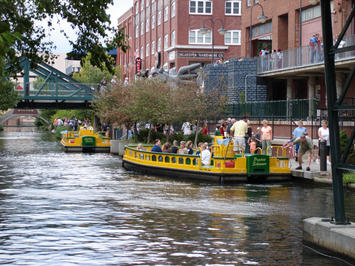
I was in Oklahoma City for the first time earlier this year. I got to see a lot of the things I’d heard about, such as the in-progress Project 180, a $175 million plan to rethink and rebuild every downtown street.
OKC is not yet where it needs to be in a number of respects. Very little of the side has sidewalks, for example. But they are pedaling in the right direction, and making some smart choices about what to do – and equally as importantly, how to pay for it. If you visit you’ll also get a sense of the city’s ambitions for more.
I have a short piece in the most recent City Journal about OKC, which is now available online. Here’s an excerpt:
In 1991, Oklahoma City lost out to Indianapolis in the competition for a United Airlines maintenance base. Mayor Ron Norick wanted to know why. He was certain that Oklahoma City had put the most compelling financial deal on the table for United. The company answered that its decision had nothing to do with the subsidy package. Rather, United simply couldn’t imagine its employees living in a place as bleak as Oklahoma City. “The quality of life had sunk so low we couldn’t buy someone’s attention,” as current mayor Mick Cornett puts it. “No matter how many incentive dollars we put in place, corporate America wasn’t interested in us.”
Click through to read the whole thing.
Aaron M. Renn is a senior fellow at the Manhattan Institute and a Contributing Editor at City Journal. He writes at The Urbanophile, where this piece originally appeared.












